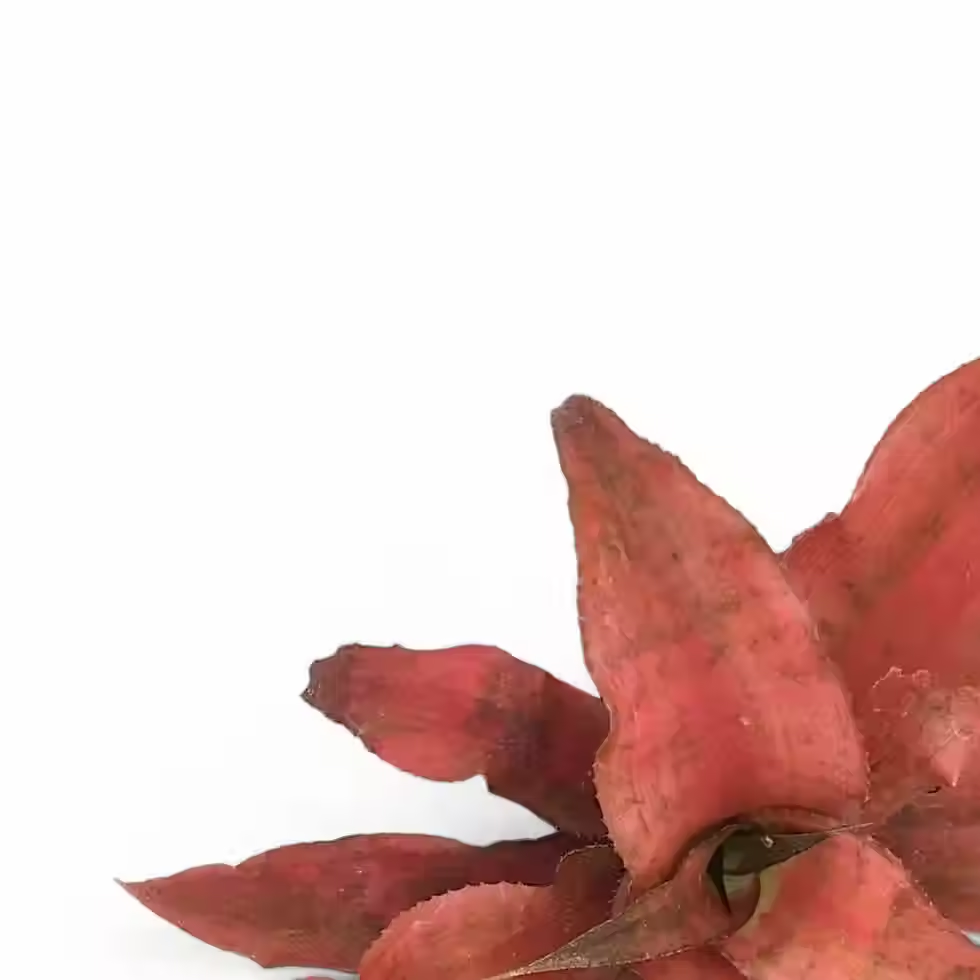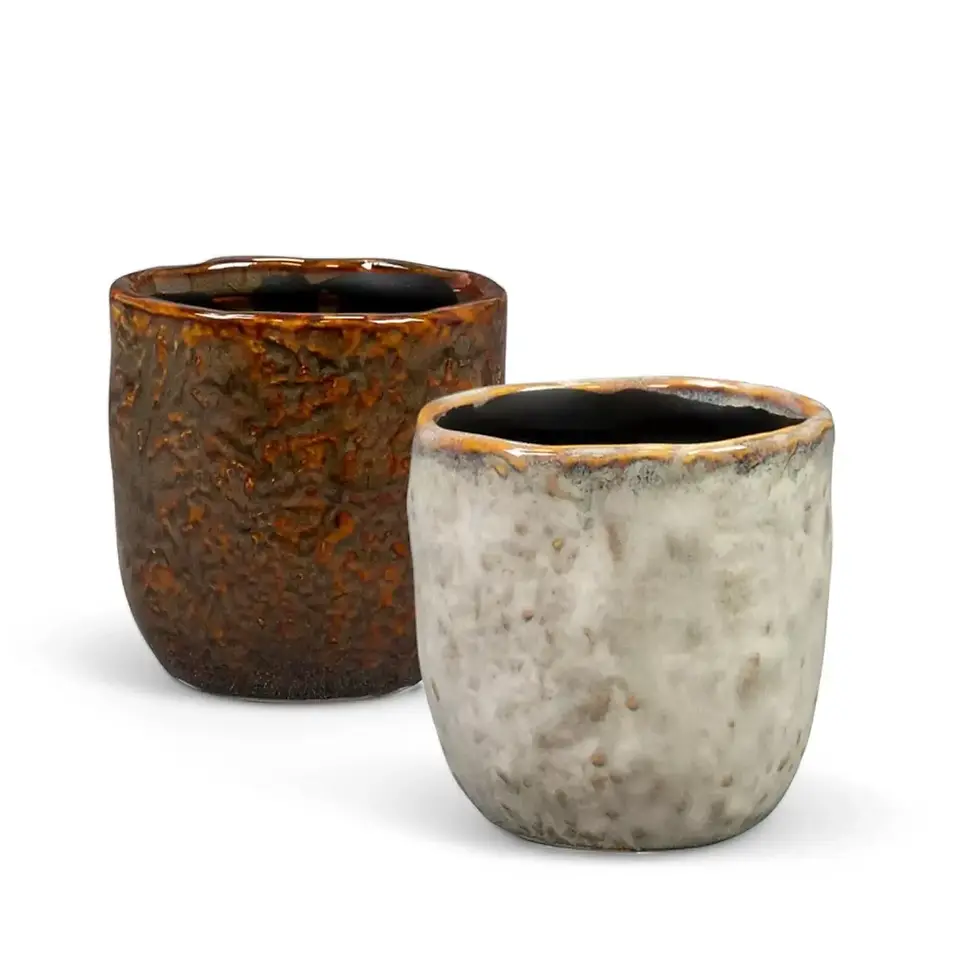Alocasia lauterbachiana - Info and Care Guide
Alocasia lauterbachiana, also known as Purple Sword Alocasia, is a striking tropical houseplant that adds bold texture and color to any indoor space. Its upright, spear-shaped leaves have deep green tops and rich purple undersides, creating a beautiful visual contrast. Unlike some of its more common relatives, Alocasia lauterbachiana is a unique addition to any collection, making it a favorite for plant enthusiasts.
Key Features of Alocasia lauterbachiana
- Distinctive Growth Habit: Upright with stiff brown stems and narrow, lance-shaped leaves. Ideal for adding height without overwhelming small spaces.
- Dynamic Color Contrast: Deep green leaves with purple undersides create a striking visual display.
- Low-Maintenance Beauty: Adaptable and easy to care for, making it suitable for all experience levels.
Caring for Alocasia lauterbachiana
With the right care, Alocasia lauterbachiana will thrive and stand out in your indoor garden. Here’s how to keep it healthy:
→ Light Requirements
- Prefers bright, indirect light. Aim for 8-10 hours of filtered sunlight daily.
- Avoid direct sunlight, which can scorch the leaves. Place near a north or east-facing window.
→ Soil and Potting Mix
- Use well-draining, slightly acidic soil.
- A mix of potting soil, orchid bark, perlite, and coconut coir ensures proper moisture balance and prevents root rot.
→ Watering Guidelines
- Allow the top 75% of soil to dry out before watering.
- Overwatering can lead to root rot. Water thoroughly, allowing excess water to drain completely.
→ Fertilization Needs
- Feed monthly during spring and summer with a balanced liquid fertilizer diluted to half strength.
→ Humidity and Temperature
- Thrives in high humidity (60-70%). Use a humidifier or place a shallow dish of water nearby if your home is dry.
- Optimal temperature is between 18°C and 27°C. Keep away from drafts or heating vents to avoid stress.
→ Potting and Container Selection
- Repot every 1-2 years as needed.
- Use a slightly larger pot to avoid excess soil, which retains too much moisture.
- Choose a pot with drainage holes to prevent waterlogging. Terracotta pots provide extra breathability for the roots.
Propagation
Propagate Alocasia lauterbachiana through division during repotting, ideally in spring or early summer:
- Gently remove the plant from its pot.
- Separate a section of the rhizome with at least one leaf and healthy roots.
- Plant in fresh, well-draining soil and water lightly.
- Keep in a warm, humid spot to help it establish.
Common Issues and Solutions for Alocasia lauterbachiana
→ Drooping Leaves
- Cause: Environmental changes or overwatering.
- Solution: Allow the plant to adjust, reduce watering, and support the leaves if needed.
→ Browning Leaf Edges
- Cause: Low humidity or over-fertilization.
- Solution: Increase humidity and reduce fertilization frequency.
→ Yellowing Leaves
- Cause: Overwatering or poor drainage.
- Solution: Check soil moisture and adjust watering to keep soil moist but not soggy.
→ Leaf Drop
- Cause: Sudden changes in light or watering.
- Solution: Evaluate and adjust care as needed.
→ Root Rot
- Cause: Overwatering and poor drainage.
- Solution: Avoid overwatering, use well-draining soil, and trim affected roots if needed.
→ Pest Management
- Inspect regularly for pests like spider mites, aphids, and mealybugs.
- Treat infestations with insecticidal soap , neem oil, or use beneficial insects, covering both sides of the leaves.
Additional Tips for Growing Alocasia lauterbachiana
→ Placement
- Place in a bright spot with indirect light, away from high-traffic areas to protect delicate leaves.
→ Researching Origins for Optimal Care
- To help your Alocasia lauterbachiana thrive, try to replicate its native tropical habitat. Understanding the climate, soil, and natural growth patterns provides the foundation for successful cultivation, supporting its growth and vibrant leaves.
→ Toxicity Warning
- Contains calcium oxalate crystals, toxic if ingested. Keep out of reach of pets and children.
Etymology and Origins
The name Alocasia lauterbachiana honors Dr. Karl Adolf Georg Lauterbach, a German-Polish botanist. Originally classified under Schizocasia, it was later included in the Alocasia genus. The name Alocasia comes from the Greek prefix “a,” meaning “without,” and Colocasia, a closely related genus.
FAQs about Alocasia lauterbachiana
→ 1. How often should I water Alocasia lauterbachiana?
Water when the top 75% of the soil has dried out. Overwatering can lead to root rot, so allow the soil to partially dry before watering again.
→ 2. Why are the leaves of my Alocasia lauterbachiana turning yellow?
Yellowing leaves are often caused by overwatering or poor drainage. Check the soil moisture level and adjust your watering routine to keep the soil evenly moist but not waterlogged.
→ 3. Can I grow Alocasia lauterbachiana in low light conditions?
Alocasia lauterbachiana prefers bright, indirect light. While it can tolerate lower light for short periods, prolonged low light can slow growth and diminish leaf color intensity.
→ 4. Is Alocasia lauterbachiana toxic to pets?
Yes, Alocasia lauterbachiana contains calcium oxalate crystals, which are toxic if ingested. Keep the plant out of reach of pets and children.
Order Your Alocasia lauterbachiana Today
Ready to add the striking Alocasia lauterbachiana to your plant collection? Bring this unique tropical beauty into your home and enjoy its bold texture and vibrant colors. Shop now and give your indoor space a stunning upgrade!
Alocasia lauterbachiana
Alocasia lauterbachiana is approximately 75 cm tall and comes in a ⌀ 19 cm pot

























































